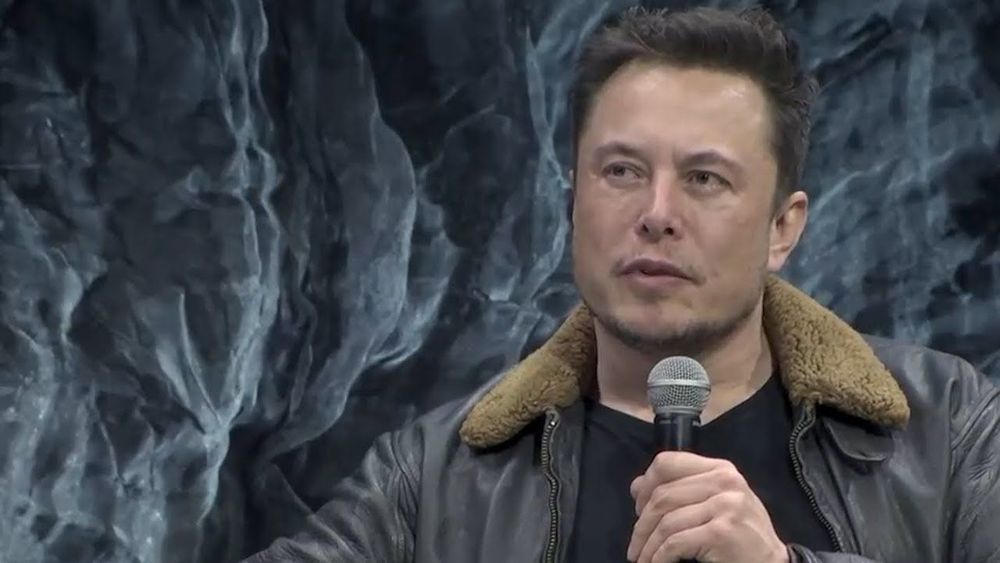Jun 17, 2020
The Boring Company: map shows Elon Musk’s big plans for Las Vegas
Posted by Brent Ellman in category: Elon Musk
Elon Musk’s tunnel-digging firm is currently completing a tunnel at the Las Vegas Convention Center.
Elon Musk’s tunnel-digging firm is currently completing a tunnel at the Las Vegas Convention Center.
Elon Musk announced that his secretive brain-computer interface startup Neuralink is working on an “awesome” update of his brain implant technology.
Incredible Elon Musk
Could the least exciting bit of Elon Musk’s empire end up being the most transformative?
SpaceX could use the electric skateboard of the Cybertruck to build all the of vehicles that they need for a lunar mining operation. About twenty-five to thirty cybertrucks could be delivered to the moon with every SpaceX Starship.
A lunar base and mining operation would lower the cost for lunar operations by 70 times and by ten times for high earth orbit. A lunar mining operation would also lower the cost of operations to Mars and the SpaceX plans for a city on Mars. Before, Elon Musk makes a city on Mars using a dozen fleets of one hundred Starships he will build a mining town on the moon.
Hypebeast has rendered a Tesla Cybertruck as a six-wheel lunar rover.
Sending a handful of people certainly could serve as a proof of concept analogous to America’s Spanish and Portuguese outposts in the early 1500’s, or the English and Dutch settlements in the early 1600’s. In these instances the populations measured in the dozens and would not have amounted to a lasting European presence had they not been followed by thousands of new settlers over the next few decades. But, given our more advanced technology, our level of medicine, the idea that humans could have equipment that will utilize the Martian environment to produce food, air, and other consumables, and the certainty that settlers will not be at war with the Martian equivalent of the Aztecs or Incas—couldn’t a Martian settlement survive long term with just a low number of colonists?
The answer is no—not if the goal is a permanent human presence. Not if the goal is to provide our species with some kind of extinction insurance against planetary disaster on Earth, such as a mega-volcanic eruption, nuclear war, or some other existential threat. Mars setters can use technology to get air and food from the Mars environment, but early European explorers in the New World had access to one natural resource that mid-21st century Mars colonists will not be able to manufacture: a human gene pool.
If we really want Martian colonies, we can’t send just a few Adams and Eves. We can’t set-up a Martian Jamestown of 100 people. Long-term survival will depend on the genetic diversity of a large gene pool, and this means the Elon Musk plan of sending thousands might be the only colonization plan that could work.
It’s no surprise that Tesla’s next-gen Roadster is going to be lightning-quick, with a claimed 0–60 mph time of 1.9 seconds for the base model. However, the addition of SpaceX cold-gas thrusters that will be hidden behind the car’s license plate could drop Roadster’s 0–60 mph time to a dizzying 1.1 seconds.
YouTube channel Engineering Explained used some of Isaac Newton’s basic physics principles to determine that the Roadster could become one of the quickest cars in the world. By plugging in existing information that CEO Elon Musk has revealed about Tesla’s next-gen Roadster, host Jason Fenske determined that the vehicle will weigh roughly 2000 kg (4,400 lbs), which backs into acceleration g-forces of approximately 1.44 G’s.
SpaceX updated the website for its Starlink satellite internet project on Friday, as the company continues to move closer to its goal of offering direct-to-consumer broadband from space later this year.
“Get updates on Starlink news and service availability in your area,” the website reads, with a submission form for an email address and zip code. The form allows prospective customers to apply for updates and access to a public beta test of the Starlink service.

Genetic engineering and other advanced technologies may need to come into play if people want to live in Mars.
Last month’s NASA and SpaceX successful launch of astronauts from US soil for the first time in almost a decade, has reignited discussion about space travel to Mars and beyond. SpaceX is fronted by the billionaire Elon Musk.
Continue reading “Elon Musk makes getting humans to Mars his top priority” »
SpaceX is developing a massive stainless-steel Starship that will one day take one hundred passengers to Mars. The company aims to launch the fist Starship with cargo by 2022 and targets 2024 for the first crewed voyage to Mars. The first mission to Mars will consist of taking over 100 tons of cargo humans will need to survive on the rough Martian environment. Vital things like Oxygen and food will be transported to Mars first, so, when the first astronauts arrive, they will have more survival resources. Then, the second mission will transport the first humans to the Red Planet.
Yes— Elon Musk (@elonmusk) June 5, 2020
